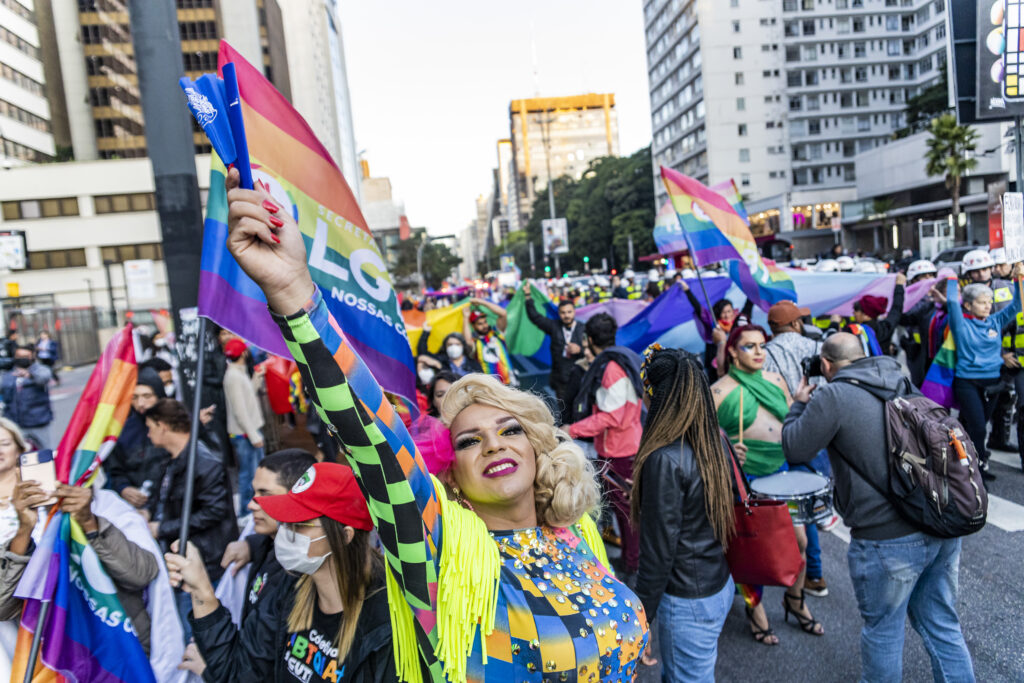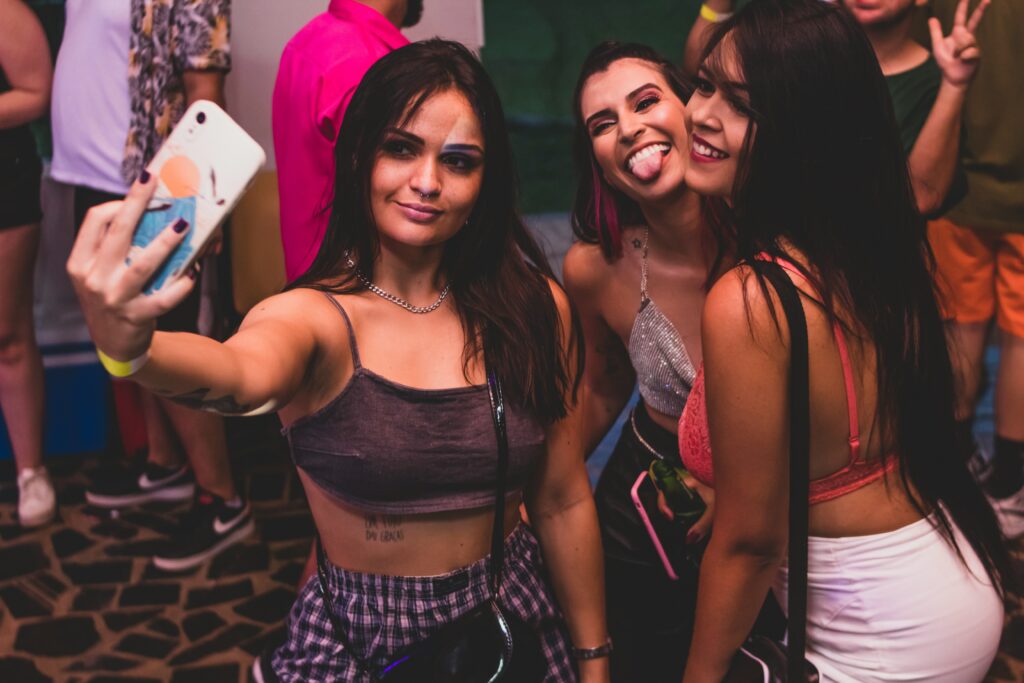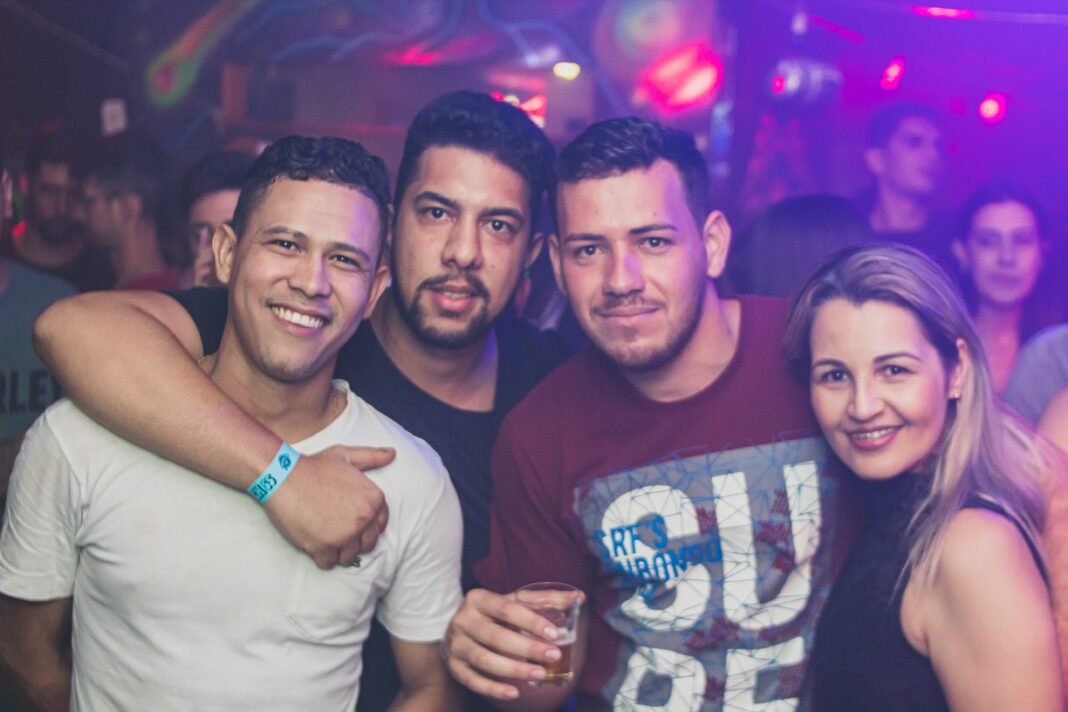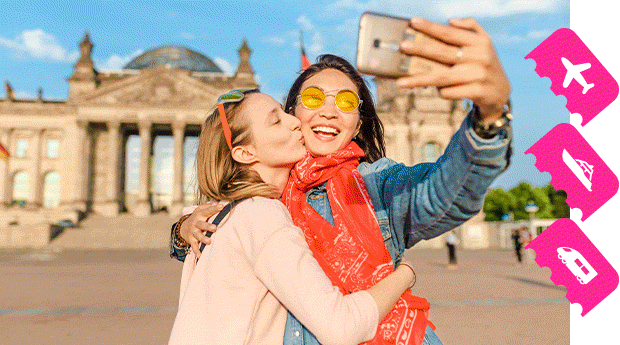To get your head around São Paulo, you’ve got to get yourself up a few storeys, to look out at the sea of towers in which so many of the Brazilian megacity’s 22 million inhabitants live. Get yourself up high enough and you’ll see the deep sea–blue rooftop pools and the golf course–green helipads that rich paulistanos depend upon to insulate themselves from the chaos below.
But as a visitor, you’ll want to take a big bite out of that chaos. It’s what you came for. São Paulo is a work-hard-play-harder melting pot of cultures, the world’s most populous city outside of Asia. Unlike its chill Brazilian rival city, Rio de Janeiro, you won’t find beaches or untouched nature (though there are some nice parks). But if you love art, shopping, restaurants, nightlife and festivals, hosted by some of the most beautiful, outgoing people on the planet, you might have found your paradise.

And so much of it is queer. Since 2006, São Paulo’s Pride celebration has been known as the biggest in the world, but you don’t have to time your trip to coincide with the parade to be overwhelmed with LGBTQ+ choices. In many neighbourhoods, same-gender couples can be seen engaging in PDA while gender nonconforming people show off their personal styles. Queer artists show up as part of mainstream exhibits, festivals and shows. Same-gender marriage has been a right in Brazil since 2013, and in 2019, the Brazilian Supreme Court ruled that discrimination on the basis of sexual orientation and gender identity is a crime akin to racism. Though violence in everyday life in Brazil remains a concern, and violence against trans people is a serious problem, institutions like the courts are among the most LGBTQ+-supportive in the world. Yes, Evangelical Christians are a political force in Brazil, and were partly responsible for making Jair Bolsonaro, Latin America’s answer to Donald Trump, president from 2019 to 2022. But they can be viewed as reactionaries against all the progress this otherwise liberal country is making.
In a city so big—and with so much traffic—it’s important to know what’s where. For most visitors, especially LGBTQ+ visitors, Avenida Paulista is the city’s key artery. A wide boulevard lined with hotels, banks, shopping centres and cultural institutions, and well-served by transit, it’s hard to say you’ve seen São Paulo without spending some time on Paulista.
To Paulista’s southwest are high-end districts sometimes collectively referred to as Jardins (though it’s mostly the Cerqueira César neighbourhood). Here is where you’ll find many of the city’s poshest restaurants, bars, boutiques and hotels, many of them haunts for LGBTQ+ people who can afford them. Continue downhill, past a neighbourhood of opulent mansions, and you’ll find yourself in Parque Ibirapuera, where many of São Paulo’s museums and monuments are located.

In the opposite direction, immediately to Avenida Paulista’s northeast, is the neighbourhood of Consolação. It can be considered the main gay village, with many gay bars, saunas and boutiques, as well as a nightlife district for straight hipsters. Before a big night out, buy a 600ml bottle of beer to share with friends on the street at the corner of Rua Peixoto Gomide and Rua Frei Caneca, where gay guys will congregate to gossip and people-watch. A couple of blocks away is the infamous Shopping Frei Caneca mall, whose merchants seem mainstream enough, but whose clients are, um, remarkably light in the loafers. A little farther along, the nicely landscaped Parque Augusta is also a hangout for gay and bi men.
Continue northeast from Parque Augusta and you’ll arrive downtown. The area between Praça da República (which could be considered the city’s main square), Catedral da Sé and Mercado Municipal can be sketchy at times—we recommend avoiding it on Sundays, when most businesses are closed. But it’s an area full of interesting architecture, as well as many LGBTQ+ venues, including bars, boutiques, saunas and galleries.
Head southeast, back toward Avenida Paulista, and you’ll find yourself in Liberdade, home to the largest ethnic Japanese community outside of Japan—and also a lively shopping and dining district, even on Sundays.
This tour through the heart of São Paulo is just the gayest tip of the paulistano iceberg. A search for the latest megaclub, or the hippest new gallery, might lure you to other areas—and the call of the beach may lure you to the coast of São Paulo state, which is, depending on traffic (always a consideration here), about a two-hour drive away. You’ll never lack for things to do in Sampa. Just make sure you set yourself a reminder to get some sleep.
What to see and do
Parada do Orgulho LGBT+ de São Paulo (June 2, 2024). Now in its 28th year, the world’s biggest Pride parade takes over Avenida Paulista, and much of the city centre, for one day each year—one of only two or three city events allowed this privilege. On the same day, the Feira Cultural da Diversidade LGBT+, which features entertainment and a marketplace, takes place in an outdoor complex known as Memorial da América Latina.
Festival MixBrasil (November 13 to 24, 2024). With a history going back further than Pride’s, this major LBGTQ+ cultural festival hosts film screenings, theatrical performances, virtual reality, music, comedy, literature, panels and workshops at venues all over the city, but mostly in the Jardins/Avenida Paulista area. Primarily in Portuguese.
Museo da Diversidade Sexual (R. Barão de Itapetininga 99, República, São Paulo). Check the address before you go. This is a temporary storefront exhibition space until the museum itself, the first in Latin America devoted to sexual diversity, reopens after renovations.
Avenida Paulista. Though you’ll probably be constantly crossing it to get from ritzy Jardins to queer Consolação, it’s worth making a special effort to visit this boulevard on Sunday, when its six lanes of traffic are closed to motorized vehicles.
Museo de Arte de São Paulo (Av. Paulista 1578, Bela Vista, São Paulo). This modern city landmark (protests sometimes take place in the plaza beneath its upper storeys) hosts well-curated and usually LGBTQ+-inclusive special exhibitions. Its permanent collection, considered the most important in the Southern Hemisphere, is also fascinating, with works displayed on plastic-and-concrete stands that maximize the number of works that can be shown.
Mercado Municipal (R. da Cantareira 306, Centro Histórico, São Paulo). If you’ve ever visited chaotic Latin American markets, with the chicken parts here and the bulk spices there—this isn’t that. It’s definitely more polished. Specializing in deli meats, cheeses, nuts and dried fruit, draft beer and high-quality fresh fruit, this grand space, opened in 1933, is a perfect spot to enjoy a hearty sandwich with a juice or cocktail.
Parque Ibirapuera (Av. Pedro Álvares Cabral, Vila Mariana, São Paulo). If you’re feeling a bit grimy from your urban adventures, schedule a few quiet, green moments in the city’s much-loved central park. The park is also home to the small-but-well-curated Museu de Arte Moderna de São Paulo (Av. Pedro Álvares Cabral s/n, Vila Mariana, São Paulo), the literally overflowing-with-art-and-artifacts Museu Afro Brasil Emanoel Araujo (Portão 10, Av. Pedro Álvares Cabral s/n, Vila Mariana, São Paulo) and two space-age-looking buildings, Auditório Ibirapuera and Oca, designed by famed architect Oscar Niemeyer. Museu de Arte Contemporânea da Universidade de São Paulo (Av. Pedro Álvares Cabral 1301, Vila Mariana, São Paulo) sits just outside the park.
Theatro Municipal (Praça Ramos de Azevedo s/n, República, São Paulo). Built between 1903 and 1911, this opera house, music venue and exhibition space is probably one of the most photographed buildings in the city. Check out the online schedule to see if there’s something happening inside that will let you get a look at the interior.
Catedral da Sé de São Paulo (Praça da Sé, Sé, São Paulo) and Mosteiro de São Bento (Largo São Bento s/n, Centro Histórico, São Paulo). Though we are disinclined to send people to Roman Catholic monuments, these two stops are worth it for their splendid architecture. The monastery, in particular, has a mid-century modern vibe, despite being completed in 1922.
Where to stay
Mercure Sao Paulo Jardins (Alameda Itu, R. Augusta 1151, Jardins, São Paulo). The nicer of the two Mercure properties in Jardins, this one has a sauna, gym and pool. You’ll never suffer for want of a smart nearby place to go for brunch or lunch.
Meliá Paulista (Av. Paulista 2181, Consolação, São Paulo). This five-star property, right on Paulista, is upscale and design-forward. There’s a heated pool, saunas, massage rooms, gym and whirlpool.
Ibis São Paulo Paulista (Av. Paulista 2355, Bela Vista, São Paulo). If you want to be in the middle of the gay action, and close to a metro station, it’s hard to beat this budget offering from the LGBTQ+-friendly Accor chain.
Hotel Fasano São Paulo Jardins (R. Vitório Fasano 88, Cerqueira César, São Paulo). For a fashionable, beautifully designed crashpad with a sense of history, in one of the posher Jardin neighbourhoods, look no further than this beauty, one of just 10 luxurious properties in the Fasano chain.
Radisson Hotel Oscar Freire (R. da Consolação 3555, Cerqueira César, São Paulo). Staying at this affordable chain hotel means you’ll never have to go very far for dining, dates or dancing. And there’s a pool, of course.
Hotel Unique (Av. Brigadeiro Luís Antônio 4700, Jardim Paulista, São Paulo). This lux property resembles a ship, including rounded porthole-style windows. It will wow you even from across the street … or down the block. Then visit the spa and … more wow.
Hotel Chilli (Largo do Arouche 610, Vila Buarque, São Paulo). We are hesitant to mention this property in the “Where to stay” section (we’ll mention it again in “Where gay and bi men can find fun”) because it’s a men-only complex where a sauna and a cruising bar round out the offerings. But for more adventurous gay and bi male travellers, it’s not a bad place to crash, and it’s close to the downtown nightlife.
Where to eat
Dalva e Dito (R. Padre João Manuel 1115, Cerqueira César, São Paulo). Chef Alex Atala made a name for himself at D.O.M. (R. Barão de Capanema 549, Jardins, São Paulo), considered by some critics to be one of the best restaurants in the world. Dalva e Dito is Atala’s slightly less ambitious, somewhat more affordable, pleasantly rustic take on classic Brazilian cuisine. Try the rubacão, a dish from the northeast of Brazil, made with beans, rice, sun-dried meat and cheese.
Ritz (Alameda Franca 1088, Jardim Paulista, São Paulo). When this French bistro–style restaurant opened its doors in 1981 (four years before the end of the military dictatorship that ran Brazil for 21 years), it was one of the first spots in the city where LGBTQ+ people could openly mix and mingle. The queer community still supports it, mostly because it’s a cool place serving sandwiches, burgers and pasta, along with delicious cocktails.
Botanikafé Jardins (Alameda Lorena 1765, Jardins, São Paulo). There are any number of chic bakery-based eateries on and around Rua Augusta and Rua Haddock Lobo. This indoor-outdoor space feels alive with its many potted plants. The all-day brunch menu is consistently delicious.
Bar Veloso (R. Conceição Veloso 54, Vila Mariana, São Paulo). Loved by locals, this casual resto-bar is a perfect excuse to get away from Avenida Paulista and try a menu of savoury snacks meant to be shared. The patio is a lovely place to while away an evening with new friends and old. Please don’t tell us you’ve had enough coxinha.
Athenas Restaurante (R. Augusta 1449, Consolação, São Paulo). With its location right in the heart of the gaybourhood, you know the people-watching is going to be fantastic. Is everybody coming from or going to the gym? Oh, and the food—Greek with a Brazilian twist—is also pretty good. The owners have a takeout place and a gelato bar right across the street.
Calçadão Urbanoide (R. Frei Caneca 1024, Consolação, São Paulo). A laneway turned into a countercultural street-food food court, there are innumerable options for light meals here, not to mention “chopp” beer (that is, draft, pronounced SHOH-pee) and cocktails. Not explicitly LGBTQ+, but pretty darn friendly.
Where to party
Nightlife in Sampa can start quite late; clubs can be pretty empty before 1 a.m., then suddenly chockablock. But it’s common almost any time of day to enjoy a casual drink at a restaurant or bar, or even while out on the street. On many evenings, you’ll find gay guys hanging out at the corner of Rua Peixoto Gomide and Rua Frei Caneca, having beers and taking note of which nearby clubs are attracting crowds.
A further note on Brazilian nightclub culture: You usually don’t pay for drinks as you go. You’ll be given a numbered wristband or card on arrival, and each order is noted on your bill. At the end of the night, you present your number to settle up with a cashier and obtain a receipt that allows you to leave the club. Even when clubs don’t have a cover charge, they might require a minimum drink consumption. If the consumption minimum is, say, 50 reals, and you only spend 10 on drinks, you’ll still have to pay 50 reals at the end of the night.
High Club Brasil (R. João Rudge 115, Casa Verde, São Paulo). Does anyone, these days, do gay megaclubs quite like Brazilians? A visit to this state-of-the-art temple dedicated to male shirtlessness will oblige you to answer, “No, nobody.” If the laser lights, cutting-edge club music and go-go boys don’t get you, the over-the-top themed parties certainly will.
Oficina Club (R. Peixoto Gomide 73, Jardim Paulista, São Paulo). Behind the windowless grey facade, queer and queer-friendly young people of all genders and orientations party like there’s no tomorrow. More friendly than hip. Not for the crowd-adverse.
Aloka (R. Frei Caneca 916, Consolação, São Paulo). This club’s patrons are young, queer, sexy and sometimes a little naughty. Drag, dancing, shots. Their occasional open bar nights are lethal.
Casa Fluida (R. Bela Cintra 569, Consolação, São Paulo). Three storeys (including a rooftop deck) can’t contain the hipness at this temple of drag—the crowd overflows into the courtyard. Although the performers and fellow patrons are the main attraction, the graffiti art, coloured lighting and draped fabrics give the space a true bohemian vibe.
The L Club (R. Luís Murat 370, Jardim das Bandeiras, São Paulo). This reliably raucous bar for queer women attracts patrons of all ages and, in much smaller numbers, their allies. Stylish, sexy and exciteable. The crowds go wild for the live acts like only Brazilian crowds do.
Eagle São Paulo (R. Augusta 620, Consolação, São Paulo). This men-only bar attracts bearish and leathery guys. Dancing to pop hits can break out in the main room, and that’s certainly fun. But you’re also welcome to check as much clothing as you’d like and spend some time in the large, dark multiroom playspace.
Woof Bar (Av. Vieira de Carvalho 32, República, São Paulo). This easy-going unpretentious bar is a hub for local bears. Order yourself a chopp and practise your Portuguese.
Where gay and bi men can find fun
Hotel Chilli (Largo do Arouche 610, Vila Buarque, São Paulo). This men-only complex contains a hotel, sauna and cruising bar; there are different charges for access to different parts of the complex, and the price goes up on the weekends. At the time of reporting, one of the hottest places in town to hook up.
Upgrade Club (R. Santa Isabel 198, Vila Buarque, São Paulo). The vibe of this spacious sex club varies greatly according to the theme night. Testosterone night is about leather, rubber and fetish culture; Porn Play features content creators. So check the schedule and dress code before you drop by.
Hot Thermas Club (R. Aurora 710, República, São Paulo). One of the most popular and longest-standing bathhouses in Sampa. They’ve got a pool, dry and wet sauna, and all the dark nooks and crannies you could hope for, as well as occasional appearances by adult performers.
Where to shop and gear up
Paulistanos love to shop. And they love to go to malls for mainstream brands, both domestic and international. Independent stores targeting gay men and/or men who like their clothing tight and bright are scattered around Largo do Arouche, a couple of blocks from Praça da República, and around Rua Peixoto Gomide and Rua Frei Caneca. We’ve listed our favourites, but it’s worth strolling around these areas to see what’s new.
BeYourself (R. Peixoto Gomide 67, Bela Vista, São Paulo). T-shirts with rainbow unicorns, bananas and pineapples. Colourful collared shirts. Sunga bathing suits. Workout wear.
Uzo Clothing (Frei Caneca Shopping, R. Frei Caneca 569, Consolação, São Paulo). Frei Caneca Shopping is known as “the gay mall” because of its clientele, not because its boutiques are particularly queer. Well, except one. If you are looking for bejewelled shirts and sheer pants, this men’s boutique is your place to go.
Antrato (R. Frei Caneca 900, Consolação, and Largo do Arouche 63, República, São Paulo). Casual shirts, sexy underwear, workout clothes, sunglasses, harnesses. All your essential party-gear and after-party needs.
Yes Sir (Largo do Arouche 99, Loja 14, República, São Paulo). Your friendly neighbourhood fetish specialist. Harnesses, singlets, puppy masks and jocks, many with unique designs.
Shopping Cidade São Paulo (Av. Paulista 1230, Bela Vista, São Paulo). One of the bigger, posher plazas on Paulista, you’ll find lots of national and international fashion brands here. Plus there’s a cinema and a large food court.
Rua Oscar Freire (between Alameda Casa Branca and Rua Doutor Melo Alves, Jardim Paulista, São Paulo). Want a taste of the lush life? Need some designer outfits and cutting-edge cosmetics? Haul out your highest-limit credit card and check out the boutiques along this chic shopping street.


